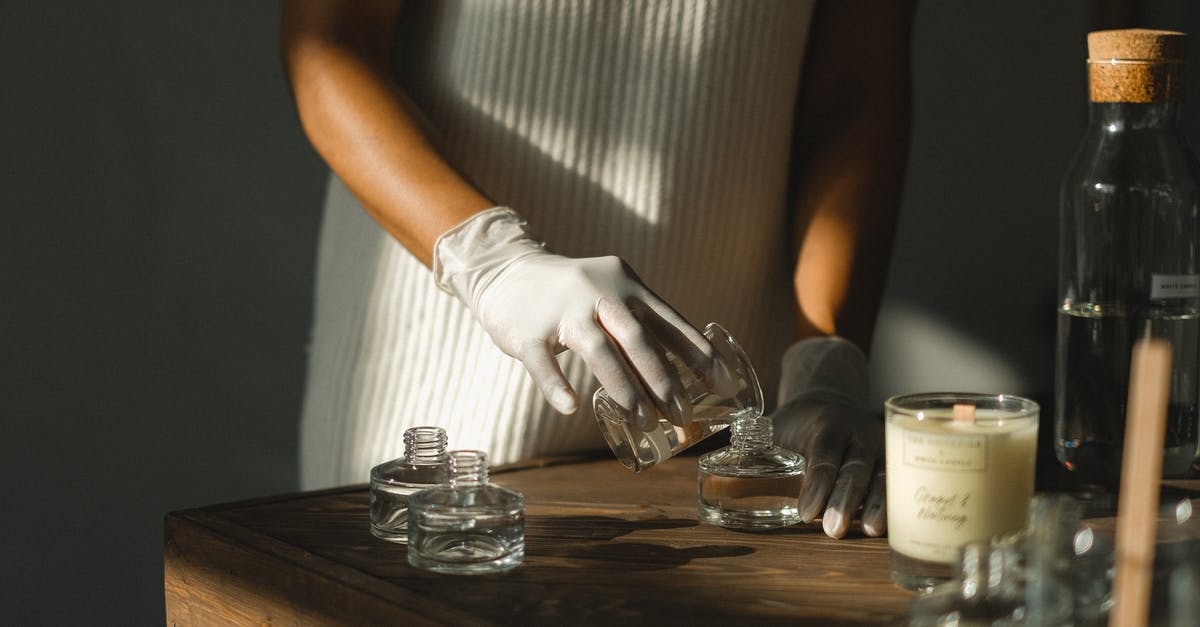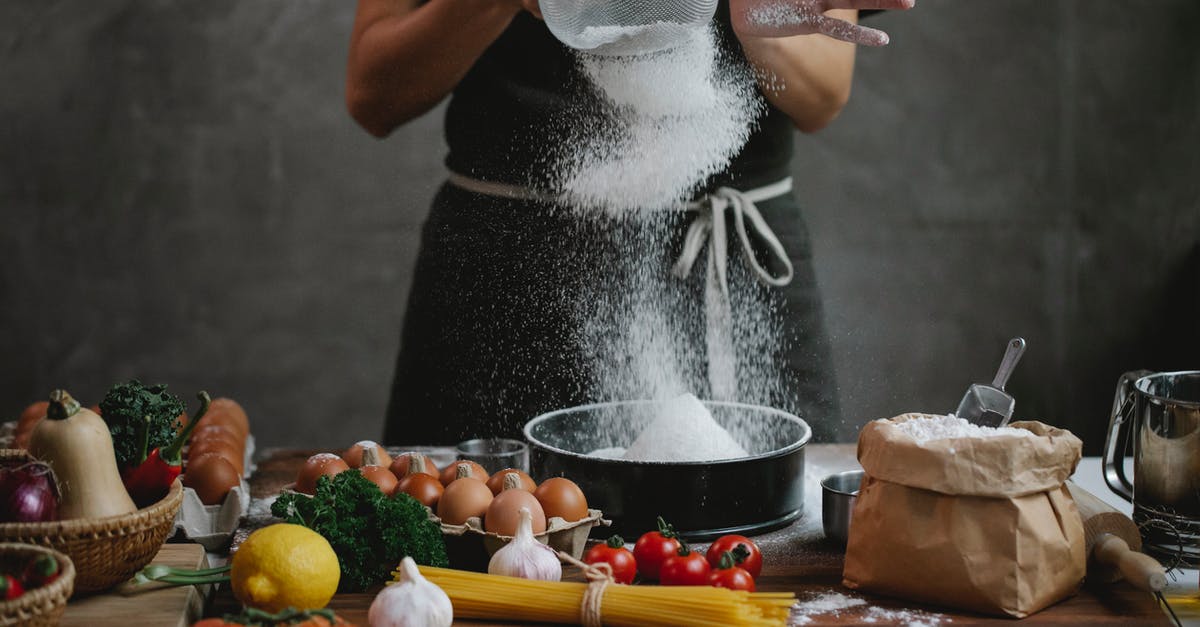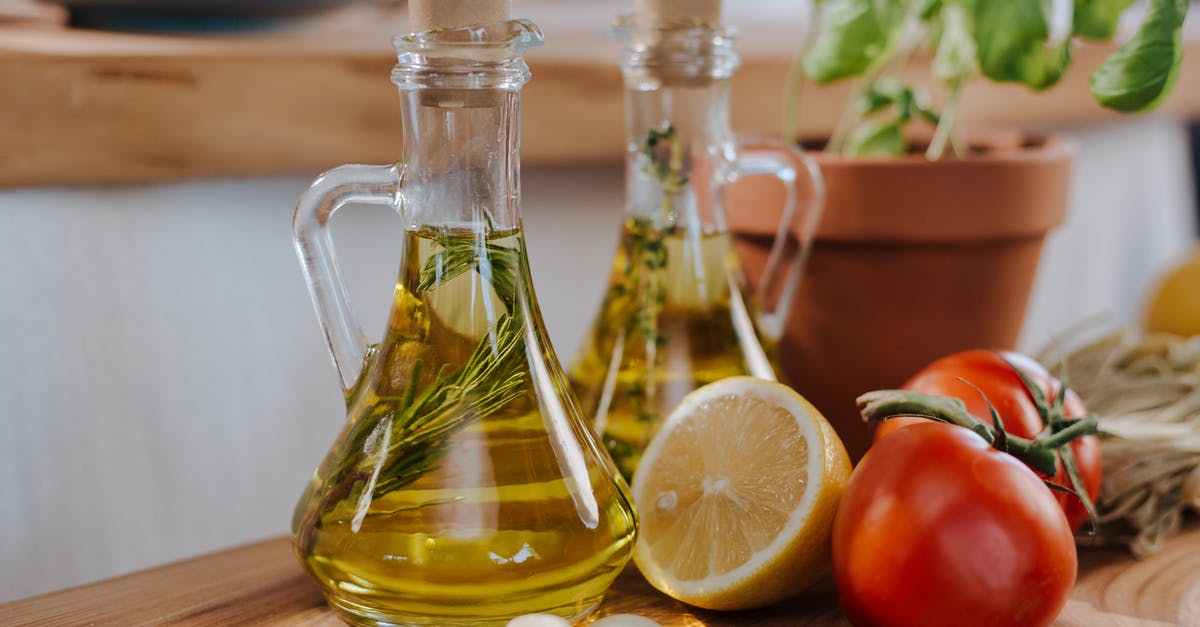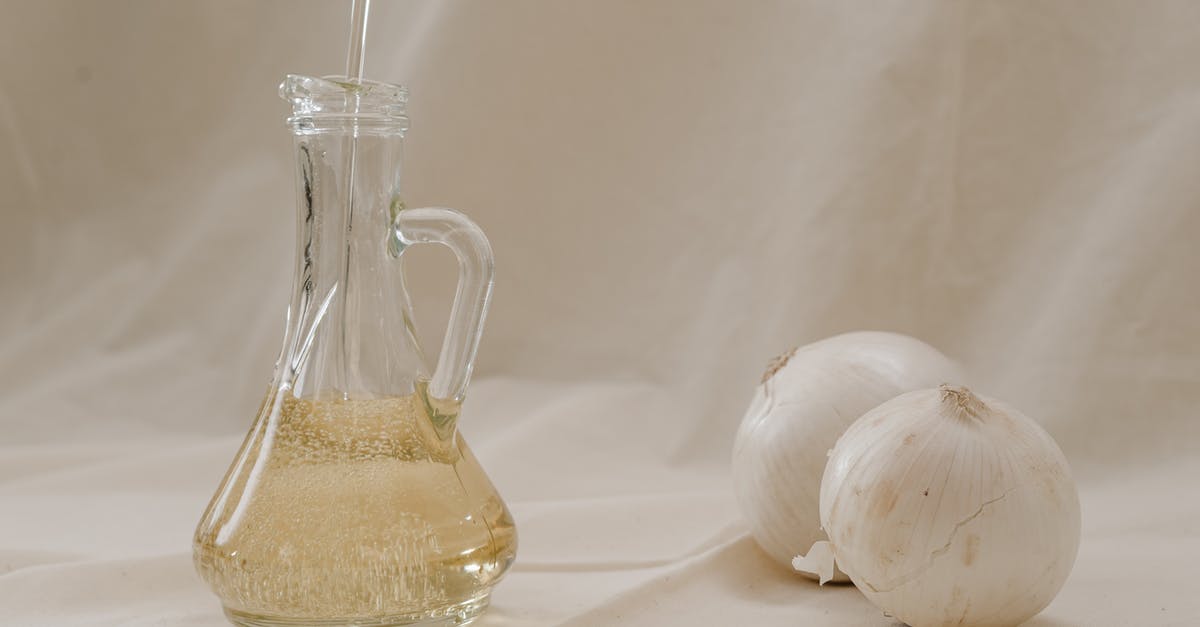How to make garlic oil in a safe way...tomorrow

I am planning on making some garlic oil for a friend of mine as a birthday present. Her birthday is tomorrow, so this question is a bit urgent.
I've read a few of the posts that indicate that botulism is a real risk when doing this.
Is there a way to make garlic oil without the risks?
A couple thoughts:
- make the oil, then remove the garlic
- use vinegar to prep the garlic (but how, and with what kind of vinegar? How does this affect the taste?)
- heat up the garlic and oil to above 250 degrees, then place in a sanitized vessel.
Any solutions? Having garlic oil on hand is quite useful.
Best Answer
According to research conducted at the University of Idaho and published in 2014 in the journal Food Protection Trends, there are now consumer guidelines to process garlic (and certain herbs) safely through acidification before adding to oil.
I would read the first link thoroughly to understand the necessary process. To ensure safety, follow the steps precisely. (The second link provides the original scientific paper with detailed data and testing protocols.)
To summarize the procedure:
Peel and chop garlic so that pieces are no more than 1/4" long in any dimension. (Whole cloves or larger pieces are NOT acceptable, since the acid needs to penetrate fully.)
Make a 3% solution of citric acid by combining 1 level Tablespoon of granular citric acid with 2 cups of water. (Note that other acids, lemon juice, vinegars, etc. have NOT been verified and tested for safe home use in this step.)
Combine chopped garlic with a 3% solution of citric acid in a ratio of 1 part garlic to 3 parts citric acid by weight. This is about 2/3 cup of chopped garlic, if you use the amount of acid in step (2).
Let garlic soak in the acid for 24 hours. (This is a minimum to ensure safety; a longer soak may be used, but it could degrade the flavor.)
Drain the acidified garlic well. Combine the acidified garlic with oil, and infuse. A ratio of 1 part garlic to 10 parts oil by weight is recommended, but the ratio can be varied from this to achieve appropriate flavor.
While the procedure recommends removing the garlic once appropriate flavor has been achieved (generally in 1 to 10 days), there is no food safety risk if the garlic is kept in the oil for longer.
As for storage, they write: "Refrigeration of these infused oils is recommended for quality, but not required for safety." And later:
While oils infused with flavors from acidified garlic, basil, oregano, and rosemary can be safely stored at room temperature, oil flavor quality is maintained for a longer period of time with refrigerator or freezer storage. It is also best to protect infused oils from light by storing them in dark-colored bottles. Make sure the bottles are clean and food grade. All vegetable oils retain quality better at cold temperatures and when protected from light.
The scientific paper also notes that the taste and quality of the infused oil produced using this home method was not less than infused commercial oil:
Since panelists were not able to distinguish olive oil infused with garlic that was acidified with citric acid from the same olive oil infused with commercially acidified garlic (acidified with phosphoric acid), the acceptability of citric acid for use in consumer acidification of garlic and herbs for the production of infused oils was verified.
Note that acidification is the essential step here and is the only method tested for home use so far to ensure safety for longer storage. The paper specifically notes that there are no approved procedures for pressure canning garlic in oil at home, and non-acidified garlic in oil mixtures must be refrigerated (and used within 2 to 4 days) or frozen.
IMPORTANT DISCLAIMER: Food preservation is not to be taken lightly, particularly in situations that are known risks for botulism. People who are familiar with home canning recipes already know that one should only use approved recipes and procedures that have been thoroughly tested; this procedure is no exception. Botulism risks are generally low, but the consequences of deviating can be severe.
If you are not willing to go through this detailed procedure (or another one approved by a reputable food safety and preservation organization), be sure to store any garlic-infused oils in the refrigerator and use within 2-4 days or freeze.
Pictures about "How to make garlic oil in a safe way...tomorrow"



How do you make garlic oil safe?
To make the infusion, use one part acidified garlic or herb to 10 parts oil. Infuse oils at room temperatures for one to 10 days. The intensity of the flavor will increase over time. Brown said that once the oil has reached the desired flavor, remove the garlic or herbs.How long is it safe to keep garlic in oil?
To reduce the risk of getting Botulism from garlic in oil you'll need to store your raw garlic in oil inside the refrigerator and use it within 2-3 weeks. You can safely store garlic in oil for about 4 months in the freezer. Any garlic in oil mixture left at room temperature for two hours should be thrown away.How long does garlic infused oil last in the fridge?
The garlic-infused flavored oil can be stored in an airtight container, refrigerated, for up to 1 month.How long does homemade garlic oil last?
Allow to cool, strain out the garlic cloves, and use the oil in the recipe of your choice. The garlic oil will keep well sealed in the fridge for up to two weeks.Garlic Confit and Garlic Oil (Hot and Cold Infusion Method) + (How to get Super Clear Infused Oil)
More answers regarding how to make garlic oil in a safe way...tomorrow
Answer 2
I recommend you have a look at this:
To summarize the salient points, there are three safe methods of preserving garlic at home:
- Freezing
- Drying (dehydrating)
- Pickling (storing in wine or vinegar)
Note that "preparing" garlic in acid is not pickling. It has to be stored that way; the botulism spores cannot grow in acid, but they will not necessarily be killed either. Also note that you'll eventually see mold with this method (much sooner at room temperature). Anyway, this doesn't involve any oil, so it is probably not what you want.
Making the oil and then removing the garlic is also clearly not a solution here; the bacteria and spores can very easily migrate from the garlic to the oil in less time than it takes you to actually infuse any flavour.
It is true that cooking garlic to 121° C / 250° F for no less than 3 minutes will kill all of the bacteria and spores, but this will also kill most of the flavour, and even then, it's difficult (actually, it's impossible without a lab) to be certain that you were successful - and that's assuming it doesn't get recontaminated on its way to the jar.
Garlic is a low-acid food and the oil provides an anaerobic environment. Combined with room or even refrigerator temperatures, this is precisely the environment that C.botulinum bacteria and spores grow best in. Even if you manage to kill it all, you then have to take steps to prevent recontamination.
Commercially-bottled garlic in oil is not only pressure-canned to guarantee immediate safety, but also has strong acids (i.e. phosphoric) and usually some other preservatives added in order to prevent any future contamination. And even then, they generally recommend that it be stored in the refrigerator, not at room temperature.
If you are experienced with home pressure canning (and I cannot emphasize the word experienced enough here) then you could probably use a method similar to that of pickling peppers; the risks are about the same (peppers are also low-acid), and you are acidifying the mixture at the same time as the canning. This, obviously, will affect the flavour, but it will be reasonably safe. And again, home-canned vegetables should always be stored in the refrigerator, never at room temperature.
Another option is to dry the garlic first, then store it in the oil. The bacteria need water (not oil) to survive and multiply, so if the moisture level is down to 6% or lower, the risk of contamination is extremely low. As mentioned above, you can use this method at home; the downside is of course that dried garlic won't infuse as well, but at least it won't have a pickled/acid taste.
So in a nutshell, your options for making garlic oil at home are either (a) don't do it, (b) dehydrate the garlic first, or (c) pressure-can it with an acid. Of those, I would pick (a), but if you're dead-set on following through with this, then make sure you follow the instructions very carefully.
Answer 3
Unless you cook with surgically cleaned equipment (pans, utensils, and containers), with masks, gloves, and in a germ free room (Good Luck on that) bacteria and germs are everywhere. The fact that our bodies deal with it every second of every day is what builds up internal antibodies in our bodies to fight the next onslaught. Get Real for your own sake. Learn how to macerate your garlic oil. Very easy and safe. Not to mention incredibly cheaper. PS. DON'T forget to WASH your hands!!!
Sources: Stack Exchange - This article follows the attribution requirements of Stack Exchange and is licensed under CC BY-SA 3.0.
Images: Anna Shvets, Klaus Nielsen, Ron Lach, cottonbro
